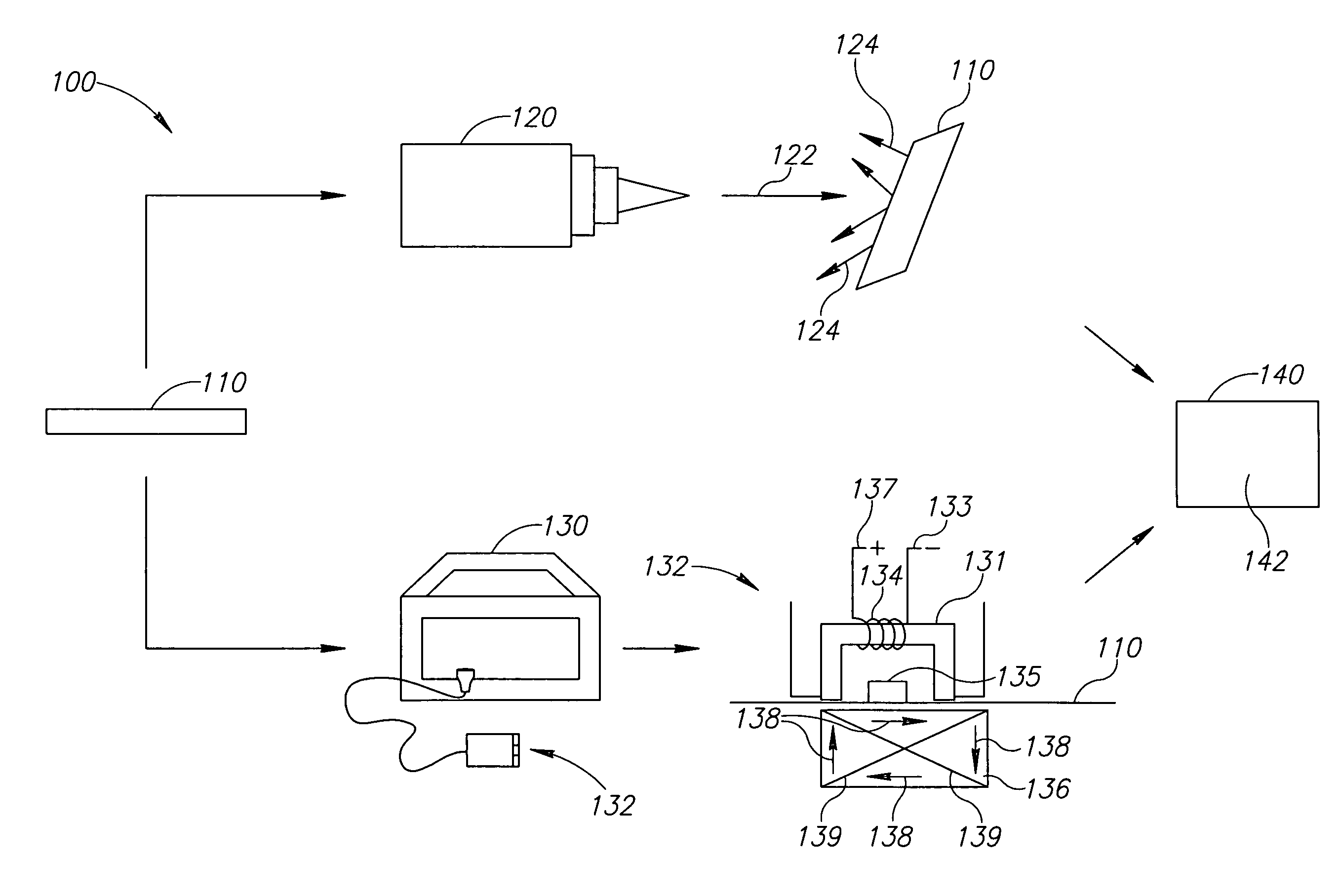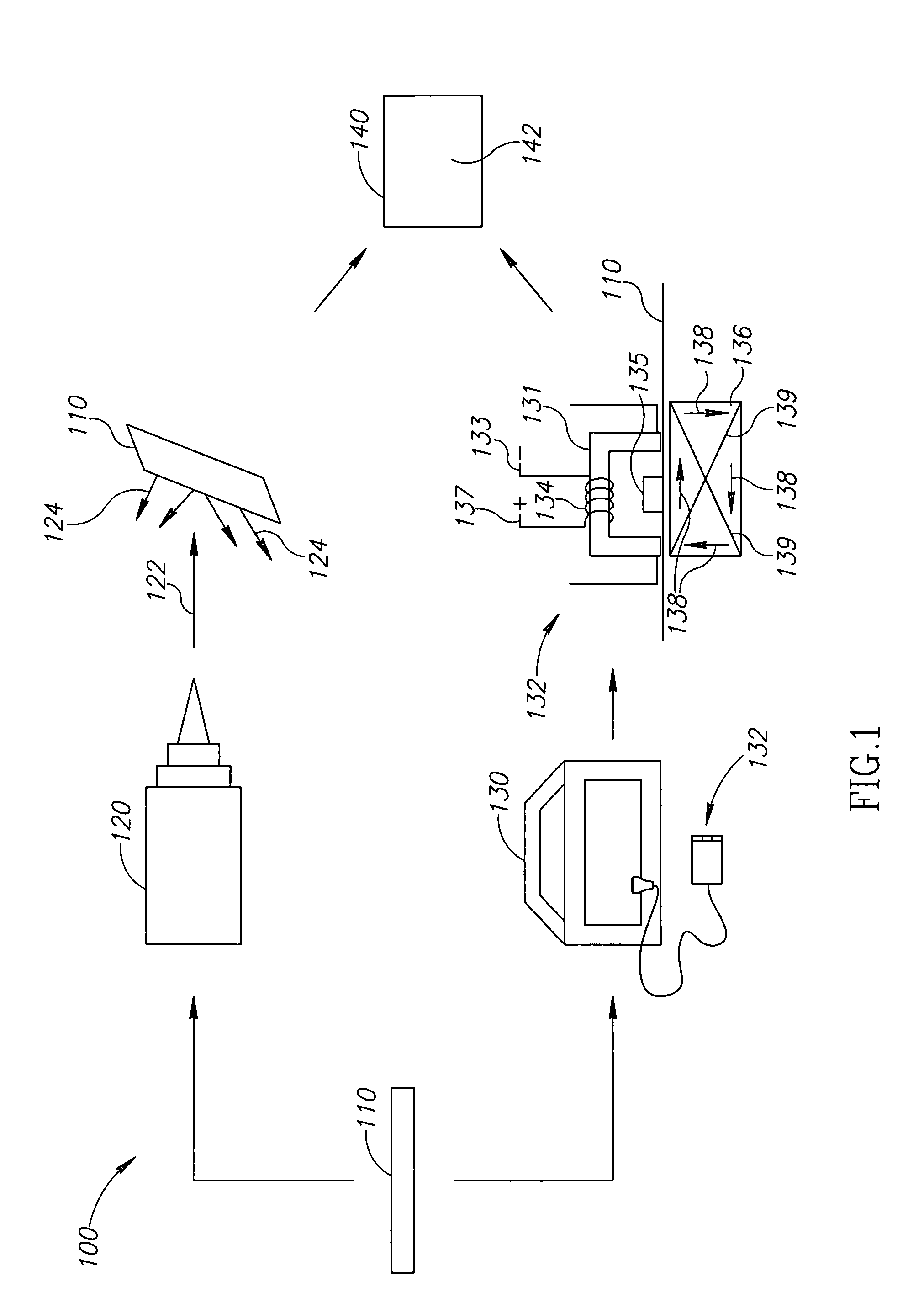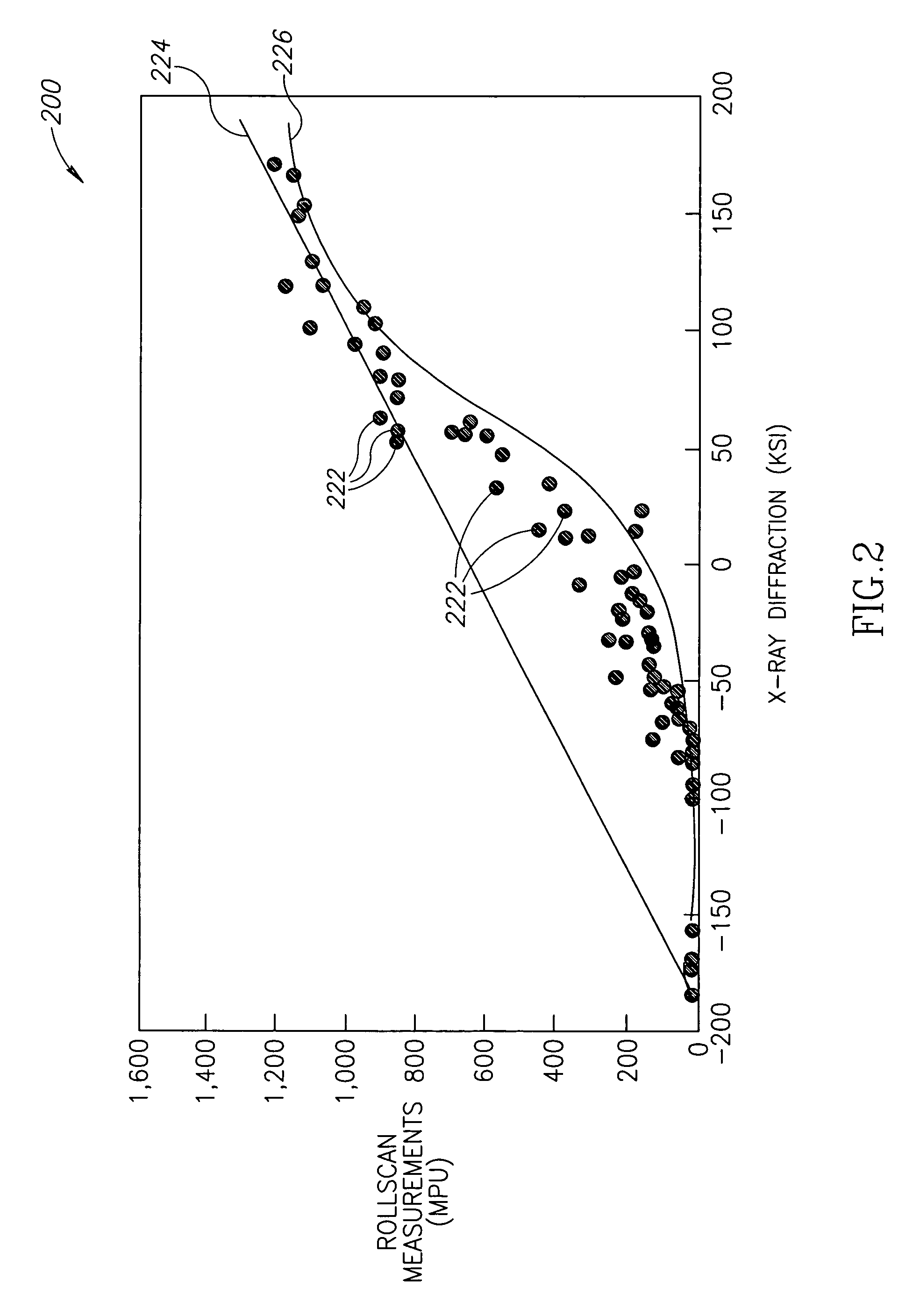Systems and methods of measuring residual stress in metallic materials
a residual stress and metal technology, applied in the direction of force measurement, material analysis using wave/particle radiation, instruments, etc., can solve the problems of inability to accurately and meaningfully measure residual stress, limited measurement by diffraction methods alone, and complicated theoretical calculations of residual stress. , to achieve the effect of reducing exposure to corrosion and accurate and meaningful measurement of residual stress
- Summary
- Abstract
- Description
- Claims
- Application Information
AI Technical Summary
Benefits of technology
Problems solved by technology
Method used
Image
Examples
Embodiment Construction
[0013]The present invention relates to systems and methods of measuring residual stress in metallic materials. Many specific details of certain embodiments of the invention are set forth in the following description and in FIGS. 1–4 to provide a thorough understanding of such embodiments. One skilled in the art, however, will understand that the present invention may have additional embodiments, or that the present invention may be practiced without one or more of the details described in the following description.
[0014]FIG. 1 is a schematic view of a system 100 for measuring residual stress in a stressed material 110 according to an embodiment of the present invention. In one aspect, the system 100 includes a radiation device 120, an electromagnetic assembly 130, and a data reduction system 140 for combining the measurements of the radiation device 120 and the electromagnetic assembly 130. The radiation device 120 directs radiation 122 onto the stressed material 110 and detects the...
PUM
 Login to View More
Login to View More Abstract
Description
Claims
Application Information
 Login to View More
Login to View More - R&D
- Intellectual Property
- Life Sciences
- Materials
- Tech Scout
- Unparalleled Data Quality
- Higher Quality Content
- 60% Fewer Hallucinations
Browse by: Latest US Patents, China's latest patents, Technical Efficacy Thesaurus, Application Domain, Technology Topic, Popular Technical Reports.
© 2025 PatSnap. All rights reserved.Legal|Privacy policy|Modern Slavery Act Transparency Statement|Sitemap|About US| Contact US: help@patsnap.com



